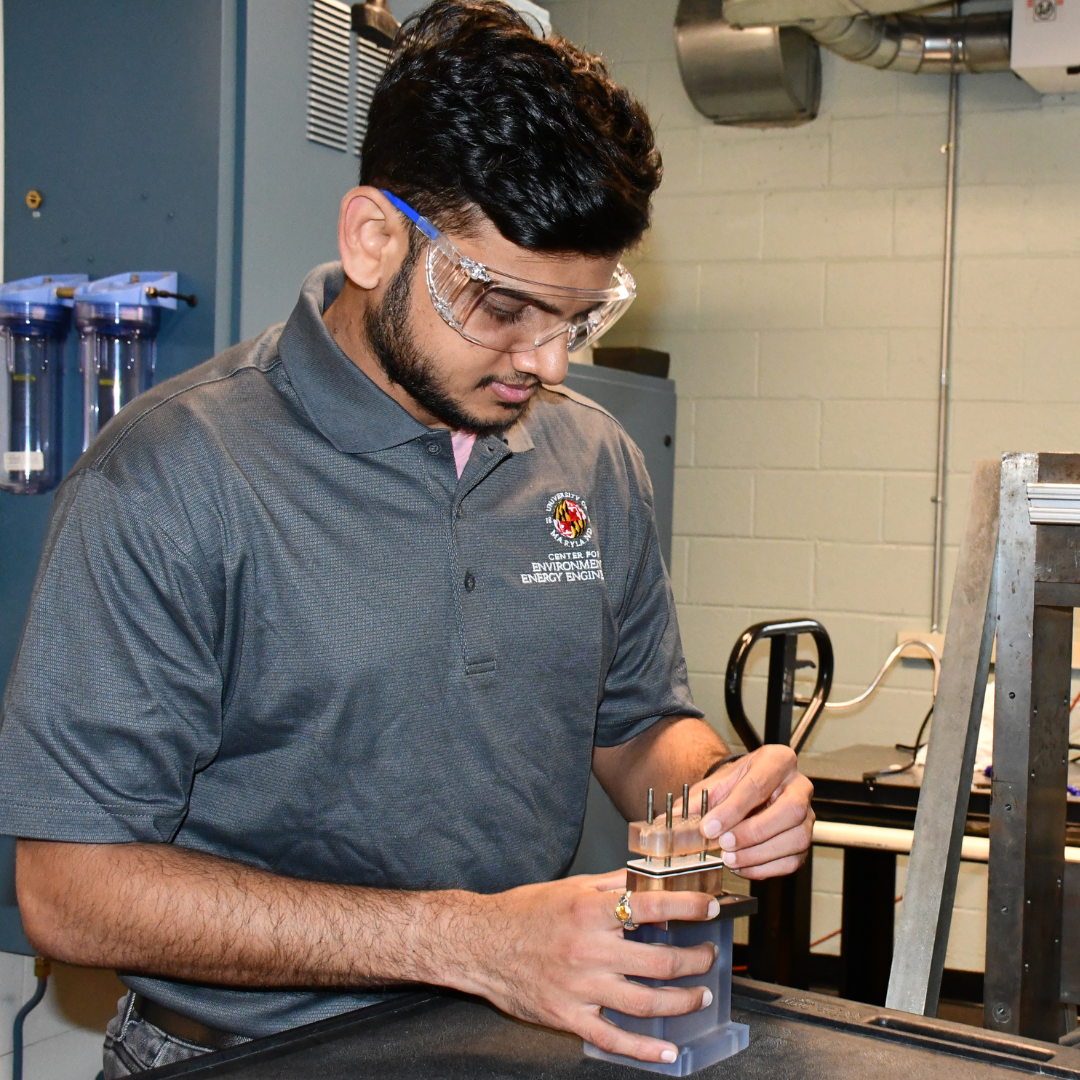News Story
U of M Researcher Provides Shot in the Arm to Flu Clinics
With the flu season upon us and the threat of a bird-flu pandemic looming in Asia and Europe, it is often up to local communities to organize vaccines for their citizens. Yet many such communities, including counties here in the United States, lack the expertise to design their clinics to process patients quickly.
Researchers at the University of Maryland’s A. James Clark School of Engineering have developed software that can help public health officials design mass dispensing and vaccination clinics and streamline their processes, ensuring that the optimal number of people will be vaccinated quickly, especially in times of crisis. Public health professionals from around the world can download the program for free to evaluate congestion in their clinics and find ways to streamline their operations.
The software, based in Microsoft Excel, was developed after extensive time studies at exercises for mass smallpox vaccination and for mass dispensing of antibiotics in case of anthrax. Additional data is being collected this year at real flu vaccination clinics. Jeffrey Herrmann, an associate professor in the Department of Mechanical Engineering and the Institute for Systems Research at the Clark School, developed the system.
While there are existing clinic planning models available for evaluating clinic capacity, Herrmann’s clinic planning model also tackles the problems of congestion and line formation, which other models do not. General queuing software exists, but these are not specifically meant for mass dispensing and vaccination clinics.
The clinic planning model can be used now to create emergency preparedness plans and during the early stages of an event.
“Should mass dispensing or mass vaccination be needed, the software can help public health officials adjust their plans to respond to the scenario that is happening,” Herrmann says. “They can quickly make important decisions that will affect how fast their citizens receive treatment.” By easing congestion in these facilities, widespread panic is much less likely to develop in the face of a possible pandemic like the bird flu.
Planners in Montgomery County, Md., recently used the model while creating their plans to respond to a pandemic flu. “In a couple of hours, they considered many different alternatives before selecting the clinic design that was best for their situation,” says Herrmann.
Kay Aaby, director of Montgomery County’s Advanced Practice Center for Public Health Emergency Preparedness and Response [title needs to be confirmed], collaborated on the research with Herrmann and has used the software.
“Public health officials really need to embrace the many new technologies and resources available and partner with our non-traditional partners such as engineering schools who can give insight where public health is challenged,” Aaby says.
The software takes into account factors such as staffing, space within the clinics and the flow of patients into them (such as whether they will be arriving in buses or individually). The program can show clinic managers how an increase in staff levels will affect the facility’s ability to process more people—even calculating the number of people in line and their approximate average wait time at any station in the clinic.
“Modeling is a very good way of validating our plans,” says Aaby. “You can take this model and plug in your plans to see where you need to make adjustments.”
The software can be used evaluate not only a vaccination clinic, but also any type of facility that dispenses medicine or conducts other types of emergency response activities. The system was developed in cooperation with the Centers for Disease Control.
In addition to Montgomery County, Md., planners in other jurisdictions around the country are collaborating on the research and/or using the software to design their clinics. These jurisdictions include Owensboro, Ky.; Cambridge, Mass.; Anoka County, Minn.; St. Louis County, Mo.; Burlington County, N.J.; Corteret County, N.C.; Philadelphia, Pa.; Collin County, Texas; Washington, D.C.; and Wicomico and Worcester counties in Maryland.
“This software is a great example of how engineering techniques can be used to help others,” Herrmann says. “It has been a team effort. The public health emergency preparedness planners have been wonderful collaborators and have provided valuable input and feedback. The students working on the project have worked hard to create a useful tool that can have a great impact.”
Computer Integrated Manufacturing (CIM) Lab Mass Vaccination Project:
http://www.isr.umd.edu/Labs/CIM/projects/clinic/index.html
Advanced Practice Center for Public Health Emergency Preparedness and Response:
http://www.montgomerycountymd.gov/hhstmpl.asp?url=/content/hhs/phs/APC/index.asp
Published October 15, 2005









